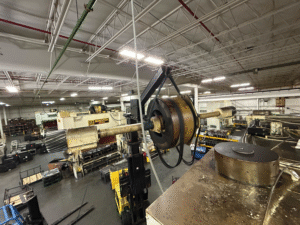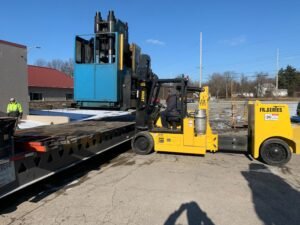Selecting the appropriate racking system for your storage needs is crucial for optimizing space, ensuring safety, and improving operational efficiency. This comprehensive guide will walk you through the various considerations and options available to help you make an informed decision.
Understanding Your Storage Requirements
Before diving into the different types of racking systems, it’s essential to assess your specific storage needs. This assessment involves evaluating several key factors:
1. Inventory Characteristics
- Size and Weight: Determine the dimensions and weight of the items you plan to store. This will influence the load capacity and dimensions of the racking system.
- Quantity: Estimate the total number of items and the turnover rate. High turnover might require easy access to inventory.
- Special Requirements: Consider any special storage needs, such as temperature control for perishables or secure storage for valuable items.
2. Available Space
- Warehouse Layout: Analyze the layout of your storage area, including ceiling height, floor space, and any obstructions.
- Aisle Widths: Decide on the width of aisles needed for equipment like forklifts. Narrow aisles can save space but might limit equipment options.
3. Accessibility
- Access Frequency: Identify how often you’ll need to access stored items. Frequent access might require more flexible and accessible racking systems.
- Stock Rotation: Consider whether you need first-in, first-out (FIFO) or last-in, first-out (LIFO) inventory management. Some racking systems are better suited for specific rotation needs.
Types of Racking Systems
There are various types of racking systems, each designed to meet different storage needs. Understanding the pros and cons of each type will help you choose the best solution for your requirements.
1. Selective Pallet Racking
Selective pallet racking is the most common and versatile racking system. It provides direct access to each pallet and is suitable for a wide range of products.
Advantages:
- Easy access to every pallet.
- Adjustable beams accommodate different pallet sizes.
- Suitable for both FIFO and LIFO inventory management.
Disadvantages:
- Lower storage density compared to other systems.
- Requires more aisle space.
2. Drive-In and Drive-Through Racking
These systems are designed for high-density storage, where forklifts drive directly into the racking system.
Advantages:
- Maximizes storage space by reducing aisle requirements.
- Ideal for storing large quantities of similar products.
Disadvantages:
- Limited access to individual pallets.
- Requires careful handling to avoid damaging the racks.
3. Push Back Racking
Push back racking systems allow pallets to be stored on a series of nested carts that move along inclined rails.
Advantages:
- High storage density.
- LIFO inventory management.
- Easy access to multiple pallets in each lane.
Disadvantages:
- Not suitable for all types of products.
- More expensive than selective pallet racking.
4. Pallet Flow Racking
Pallet flow racking systems use gravity to move pallets along a sloped track, ideal for FIFO inventory management.
Advantages:
- Efficient FIFO inventory management.
- High storage density.
Disadvantages:
- More complex and expensive to install.
- Requires careful maintenance.
5. Cantilever Racking
Cantilever racking is designed for storing long, bulky items such as pipes, lumber, and steel bars.
Advantages:
- Excellent for long or irregularly shaped items.
- Easy access and adjustability.
Disadvantages:
- Not suitable for standard palletized goods.
- Requires significant space and support.
Factors to Consider When Choosing a Racking System
When selecting the right racking system, consider the following factors to ensure it meets your needs effectively:
1. Load Capacity
- Weight Limits: Ensure the racking system can handle the maximum weight of your heaviest items.
- Safety Margins: Incorporate safety margins to account for potential overloading and dynamic loads during handling.
2. Scalability
- Future Growth: Choose a system that can be easily expanded or modified as your storage needs grow.
- Flexibility: Look for adjustable and modular racking systems that can adapt to different product sizes and types.
3. Safety Features
- Structural Integrity: Ensure the racking system is robust and stable, with features like cross bracing and anchoring.
- Safety Accessories: Consider additional safety features such as rack guards, netting, and pallet stops to prevent accidents.
4. Cost
- Initial Investment: Compare the upfront costs of different racking systems.
- Maintenance Costs: Consider the long-term maintenance and repair costs.
- Return on Investment: Evaluate how the racking system will impact your operational efficiency and overall ROI.
Installation and Maintenance
Proper installation and regular maintenance are crucial for the longevity and safety of your racking system.
1. Professional Installation
- Experienced Installers: Hire professional installers with experience in racking systems to ensure proper assembly and anchoring.
- Compliance: Ensure installation complies with local regulations and industry standards.
2. Regular Inspections
- Routine Checks: Conduct regular inspections to identify and address any damage or wear.
- Safety Audits: Perform periodic safety audits to ensure compliance with safety protocols and regulations.
3. Maintenance Practices
- Cleaning: Keep the racking system clean and free of debris.
- Repairs: Promptly repair any damage to prevent further issues.
- Training: Train staff on proper usage and handling to minimize the risk of accidents and damage.
Conclusion
Choosing the right racking system is a critical decision that impacts your storage efficiency, safety, and operational productivity. By thoroughly assessing your storage requirements, understanding the various racking options, and considering key factors such as load capacity, scalability, safety, and cost, you can make an informed choice that meets your specific needs. Proper installation and regular maintenance will ensure the longevity and safety of your racking system, ultimately contributing to the smooth operation of your business.
Investing time and effort into selecting the appropriate racking system will pay off in the long run, providing a solid foundation for efficient and organized storage. Whether you’re managing a retail warehouse, a food distribution center, or a manufacturing facility, the right racking system will help you optimize space, improve accessibility, and enhance overall operational efficiency.











